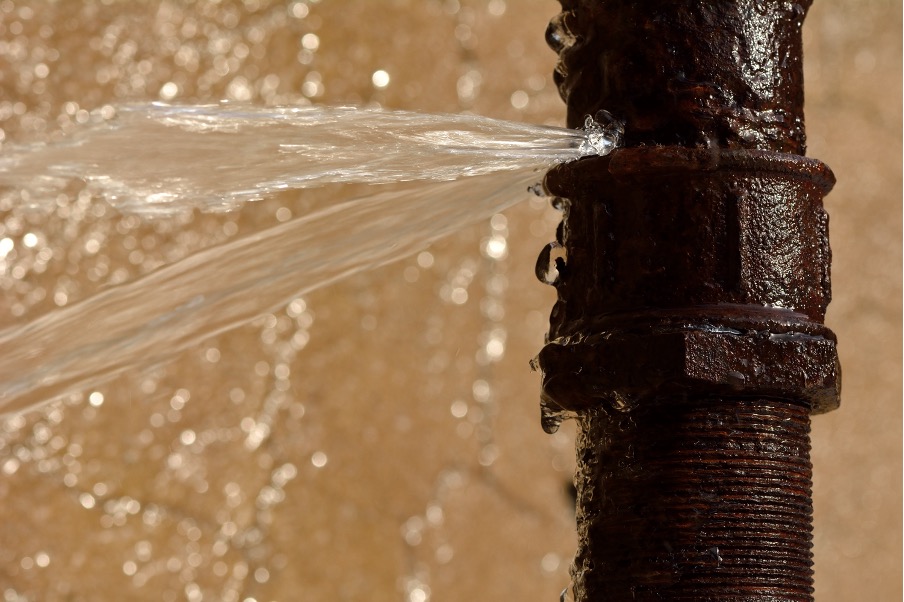Just how to Inspect If Your House Has a Covert Leak
Just how to Inspect If Your House Has a Covert Leak
Blog Article
In this article down the page you can find additional very good advice when it comes to Locating water leaks.

Early discovery of dripping water lines can mitigate a potential disaster. Aside from saving you money, it will lessen the stress and also stress. The minute you find a leakage, calling your plumber for repair work is the best remedy. Some small water leakages may not be noticeable. If you can not find it with your naked eyes, right here are some hacks that aid.
1. Take A Look At the Water Meter
Checking it is a surefire means that aids you find leaks. If it moves, that shows a fast-moving leakage. This indicates you may have a slow leakage that can even be underground.
2. Examine Water Usage
If you identify abrupt changes, regardless of your consumption being the very same, it suggests that you have leakages in your plumbing system. An abrupt spike in your bill shows a fast-moving leak.
A consistent boost every month, also with the exact same habits, shows you have a slow-moving leakage that's also gradually escalating. Call a plumber to completely examine your building, particularly if you really feel a cozy area on your floor with piping beneath.
3. Do a Food Coloring Examination
When it comes to water usage, 30% comes from toilets. If the shade in some way infiltrates your bowl during that time without flushing, there's a leak in between the storage tank and dish.
4. Asses Exterior Lines
Don't neglect to inspect your exterior water lines as well. Test spigots by affixing a garden hose pipe. Must water permeate out of the link, you have a loosened rubber gasket. Change this and ensure all connections are tight. If you've got a lawn sprinkler, it will certainly assist get it skillfully examined and also kept each year. One tiny leakage can lose lots of water and spike your water costs.
5. Check and Examine the Situation
House owners should make it a practice to examine under the sink counters and even inside cupboards for any kind of bad odor or mold growth. These two warnings show a leakage so prompt attention is needed. Doing routine examinations, also bi-annually, can conserve you from a significant trouble.
Extra importantly, if you know your home is already old, keep a watchful eye on your heaters, hoses, pipelines and so on. Look for stainings as well as deteriorating as many pipes and also home appliances have a life expectancy. They will additionally naturally deteriorate as a result of tear and use. Do not wait for it to escalate if you believe leaking water lines in your plumbing system. Call a specialist plumber right now so you do not end up with a horrible mess in your home.
Early detection of leaking water lines can alleviate a prospective catastrophe. Some small water leaks may not be visible. Inspecting it is a guaranteed method that assists you discover leaks. One tiny leakage can throw away bunches of water and also spike your water expense.
If you suspect dripping water lines in your plumbing system, do not wait for it to escalate.
WARNING SIGNS OF WATER LEAKAGE BEHIND THE WALL
PERSISTENT MUSTY ODORS
As water slowly drips from a leaky pipe inside the wall, flooring and sheetrock stay damp and develop an odor similar to wet cardboard. It generates a musty smell that can help you find hidden leaks.
MOLD IN UNUSUAL AREAS
Mold usually grows in wet areas like kitchens, baths and laundry rooms. If you spot the stuff on walls or baseboards in other rooms of the house, it’s a good indicator of undetected water leaks.
STAINS THAT GROW
When mold thrives around a leaky pipe, it sometimes takes hold on the inside surface of the affected wall. A growing stain on otherwise clean sheetrock is often your sign of a hidden plumbing problem.
PEELING OR BUBBLING WALLPAPER / PAINT
This clue is easy to miss in rooms that don’t get much use. When you see wallpaper separating along seams or paint bubbling or flaking off the wall, blame sheetrock that stays wet because of an undetected leak.
BUCKLED CEILINGS AND STAINED FLOORS
If ceilings or floors in bathrooms, kitchens or laundry areas develop structural problems, don’t rule out constant damp inside the walls. Wet sheetrock can affect adjacent framing, flooring and ceilings.
https://www.servicemasterbyzaba.com/blog/how-to-detect-water-leakage-in-walls/

I came across that entry on Finding hidden leaks when looking around the web. Enjoyed our blog? Please share it. Let another person discover it. We truly appreciate reading our article about Detecting hidden plumbing leaks.
Report this page